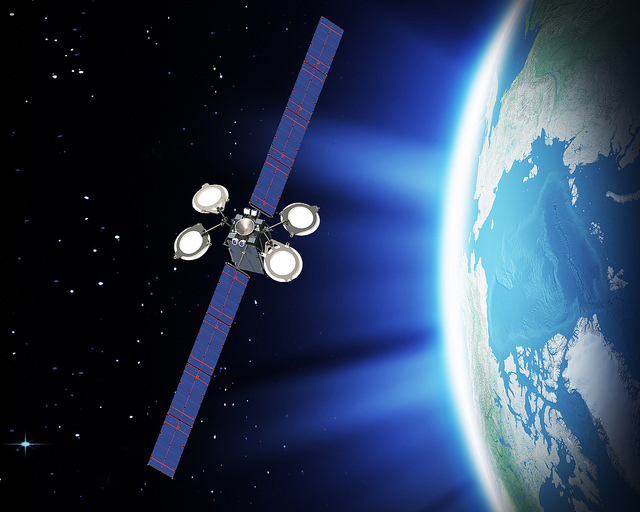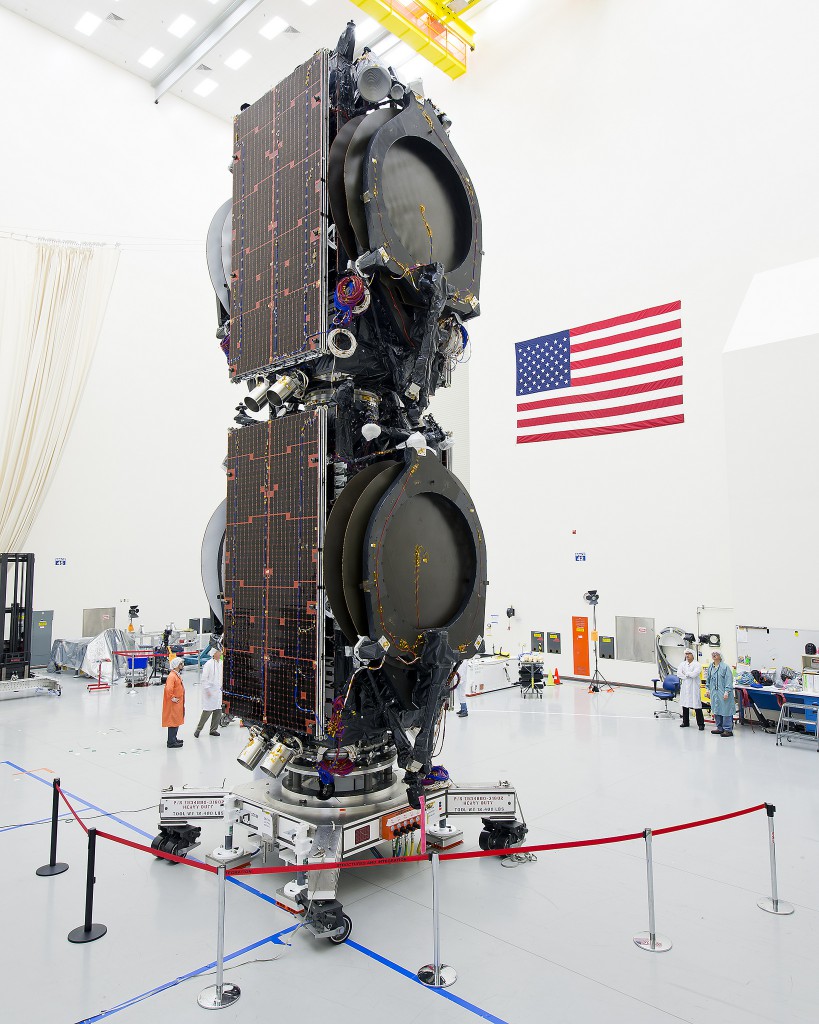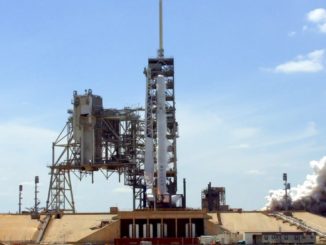
Two ion-driven communications satellites launched from Cape Canaveral on March 1 have begun novel maneuvers using electric propulsion to reach operating posts 22,300 miles over the equator.
The Boeing-built satellites will need at least six months slowly climb in altitude and adjust their orbital paths closer to the equator — maneuvers typically conducted by liquid-fueled rocket engines instead of an ion propulsion system.
Owned by Paris-based Eutelsat and Asia Broadcast Satellite of Hong Kong and Bermuda, the twin spacecraft launched March 1 aboard a SpaceX Falcon 9 rocket. Like most telecom satellite launches, the Falcon 9 rocket deployed the satellites in an egg-shaped transfer orbit.
The temporary “supersynchronous” transfer orbit reached by the Falcon 9 stretched up to 63,000 kilometers (39,146 miles) above Earth, with a low point of about 410 kilometers (254 miles) and an inclination of 24.8 degrees.
Over the coming months the Eutelsat 115 West B and ABS 3A satellites will circularize their paths around Earth at an altitude of 22,300 miles over the equator, where their speeds will match the rate of Earth’s rotation, causing the satellites to hover over fixed locations.
The Eutelsat and ABS relay stations are based on a new satellite design by Boeing Satellite Systems. The Boeing 702SP model spacecraft packs the same capacity for television broadcasts, broadband services, and data relay as a much larger satellite at reduced size and cost.
Eutelsat and ABS confirmed the deployment of each spacecraft’s power-generating solar panels to a span of 33 meters, or 108 feet, and the start of orbit-raising in the days since launch.
“We started the first orbit-raising effort (the weekend of March 7), and all has gone well so far,” said Ken Betaharon, chief technology officer at ABS. “This orbit-raising effort will resume shortly and continuously except at perigee passing time and eclipse.”
In about two months, ABS 3A will extend its antenna reflectors, then resume orbit-raising burns. ABS 3A should reach its final orbit in September, where ground controllers will test the satellite’s communications instrumentation before it enters service a few weeks later.
Eutelsat announced March 12 that its new satellite had started the same process.
The Eutelsat spacecraft launched in the lower position on the Falcon 9 rocket’s dual-payload stack, and it required structural stiffeners to take the load of the ABS satellite sitting on top.

It will take extra time for Eutelsat 115 West B to complete its orbit adjustments due to the satellite’s heavier mass.
“Orbit-raising is scheduled to last for approximately eight months and will be followed by performance tests prior to the new satellite’s commercial entry into service in November 2015,” Eutelsat said in a statement.
Communications satellites with traditional liquid rocket propellant take a few weeks to reach their final positions, but some spacecraft carry up to 5,000 pounds of fuel to feed their rocket engines.
Instead of a large fuel tank, the Boeing 702SP satellite carries small reservoirs of xenon fuel for its four ion engines, which work by blasting the gaseous propellant with electricity to ionize the fuel and push it out the thrusters at high speed.
The engines produce a whisper of thrust — about the force of a sheet of paper held in your hand — but can operate for months, burning a fraction of the fuel consumed by conventional engines.
The reduced size of the Eutelsat 115 West B and ABS 3A spacecraft allowed them to launch together on a single Falcon 9 rocket. Industry officials said each customer paid approximately $30 million for the launch, compared to launch costs more than double that figure if the satellites flew solo.
Follow Stephen Clark on Twitter: @StephenClark1.



